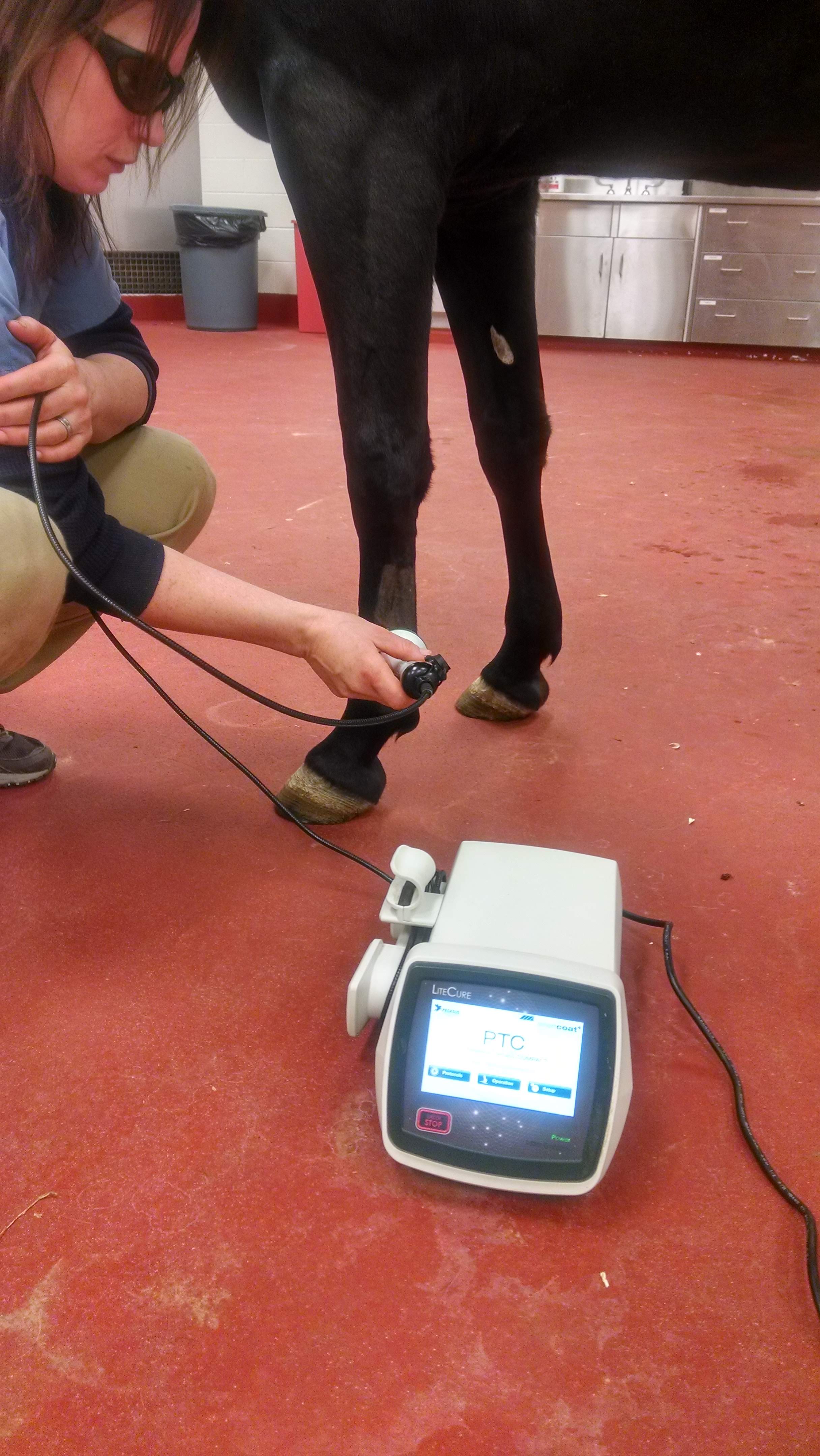Laser Therapy in Horse Therapy: A Modern Technique to Improving Equine Wellness
Laser therapy has become a pivotal method in equine therapy, utilizing focused light power to foster cellular fixing and accelerate recuperation from a selection of ailments. This non-invasive method is especially reliable in managing musculoskeletal injuries, wounds, and inflammatory conditions, substantially boosting overall horse health and wellness. By stimulating mitochondrial task and boosting ATP manufacturing, laser treatment not just boosts flow but likewise provides substantial pain alleviation. As this ingenious treatment remains to get traction, it opens intriguing possibilities for resolving persistent problems like arthritis and unguis issues, indicating a transformative shift in vet care. What makes this modality particularly engaging?
Understanding Laser Therapy
Laser therapy, a non-invasive treatment method, has gotten considerable grip in equine medication because of its effectiveness in advertising recovery and pain relief. This sophisticated healing method makes use of focused light energy to permeate cells, promoting mobile repair service and regrowth. The underlying mechanism includes the excitement of cellular mitochondria, causing increased production of adenosine triphosphate (ATP), the energy money of cells. Improved ATP levels expedite cells fixing procedures and reduce swelling, making laser treatment specifically reliable for treating musculoskeletal injuries, injuries, and various other inflammatory problems in horses.
There are a number of sorts of lasers utilized in equine therapy, each with details wavelengths and power outcomes tailored to different healing requirements. Low-level laser treatment (LLLT), also referred to as cool laser treatment, employs reduced power levels to stimulate cell function without creating thermal damage. High-intensity laser therapy (HILT), in comparison, uses greater power degrees to accomplish much deeper cells penetration and even more considerable healing impacts.
Veterinarians use various laser devices and strategies depending upon the problem being dealt with and the preferred deepness of tissue infiltration. Correct training and experience are essential for ensuring the safe and effective application of laser treatment, thereby maximizing its restorative potential while minimizing dangers.
Benefits for Horse Health
With a solid understanding of exactly how laser therapy functions, it is essential to discover its many benefits for equine health. Among the main benefits is its capability to increase tissue repair work and cell development. By stimulating cellular function, laser treatment promotes faster wound recovery and help in the regeneration of broken tissues. This can be specifically useful in lowering recovery times for horses enduring from injuries.
Additionally, laser therapy has been shown to improve flow, consequently boosting blood circulation to affected areas. Boosted circulation guarantees that necessary nutrients and oxygen are supplied a lot more successfully, helping with the recovery procedure. In addition, laser therapy's anti-inflammatory impacts help in lowering swelling and pain, which is vital for the total health of the steed.
Discomfort monitoring is an additional significant advantage. By launching endorphins and visit obstructing pain signals, laser treatment gives reliable, non-invasive remedy for both intense and persistent discomfort. This can add to improved mobility and lifestyle for the animal.
Lastly, laser treatment is a non-invasive therapy choice, reducing the danger of difficulties connected with more intrusive procedures. Its versatility and effectiveness make it an important device in modern horse veterinary medicine.
Usual Problems Dealt With

An additional common problem treated with laser treatment is arthritis. Steeds experiencing both acute and chronic arthritis take advantage of the anti-inflammatory effects of laser treatment, which assists to ease pain and improve joint function. In addition, laser treatment is employed in the management of injuries. Whether managing surgical cuts or traumatic injuries, the technique advertises faster cells repair service and minimizes the risk of infection.
Equine respiratory system problems, such as frequent airway blockage (RAO), additionally respond favorably to laser therapy. The anti-inflammatory buildings of the therapy aid in minimizing respiratory tract swelling, thus boosting breathing feature. In addition, laser therapy is useful in treating unguis problems, consisting of This Site laminitis and abscesses. By improving blood circulation and reducing discomfort, it supports quicker recovery.
Treatment and Safety And Security
Applying laser treatment in equine treatment includes a thorough procedure to make certain both efficiency and safety and security. Equine Therapy. The procedure starts with a detailed veterinary assessment to identify the suitability of laser therapy for the horse's specific problem. As soon as deemed suitable, the therapy location is prepared by cleansing and, if needed, clipping the hair to enhance laser penetration
The specialist should pick the proper sort of laser, typically a low-level laser (LLLT) or a high-power laser (HPL), relying on the problem being dealt with. The laser gadget is then adjusted to the appropriate wavelength, power, and duration settings. During the application, the expert relocates the laser over the targeted location in a systematic fashion, ensuring regular and also exposure.
Safety methods are strictly followed, including using protective eyewear for both the practitioner and the equine. Additionally, it is critical to keep an eye on the steed for any kind of indications of pain or negative responses throughout the treatment. Post-treatment, the equine is typically provided a duration of remainder to permit the restorative results to manifest.

Future of Horse Laser Therapy
As improvements in vet medication continue to unfold, the future of equine laser therapy holds significant guarantee. Arising modern technologies and much deeper clinical understandings are set to improve and expand the applications of laser treatment for horses.
Additionally, recurring research into the molecular and cellular devices of laser therapy will likely yield visit this website maximized protocols tailored to specific conditions, boosting performance and lowering treatment times. Customized therapy strategies based upon genetic and biochemical pens might come to be a truth, guaranteeing that each horse gets the most proper and effective care.
In addition, regulative developments and standardization of methods will certainly boost the reputation and dependability of laser therapy in equine method. Equine Therapy. As these technologies remain to emerge, equine laser therapy is poised to end up being a crucial part of veterinary care, offering improved healing and improved lifestyle for steeds globally
Conclusion
